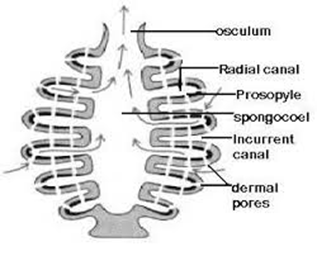Short Notes On Anatomy Of Dicot Stems in Plants - 12th Biology Notes
Anatomy Of Dicot Stems In Plants
Good Morning Students !
Do you know what is anatomy ?
What is Anatomy?
Anatomy is the study of the internal structure of living organisms. When we talk about anatomy in plants, we're referring to how the different parts of the plant's body are arranged and structured. Today, we're going to focus on the anatomy of a dicot stem in plants.
1. Epidermis
The epidermis is the outermost protective layer of the stem. It's the first line of defense against external factors. The epidermis is covered by a thin layer of cuticle, which helps in reducing water loss. It may also have a few stomata, which are tiny pores responsible for gas exchange.
2. Hypodermis
Just beneath the epidermis lies the hypodermis. This layer consists of collenchymatous cells, which provide mechanical strength to the young stem. These cells are thickened at the corners, making the stem rigid and helping it to stand upright.
3. Cortex
Next, we move inward to the cortex, which is located beneath the hypodermis. The cortex is made up of parenchymatous cells that are rounded and have thin walls. These cells are loosely packed with noticeable intercellular spaces, allowing for easy exchange of gases and storage of nutrients.
4. Endodermis
The endodermis is the innermost layer of the cortex. The cells here are rich in starch grains, and this layer is sometimes called the starch sheath. The endodermis plays a key role in controlling the flow of water and nutrients from the cortex into the vascular tissue.
5. Pericycle
Inside the endodermis, we find the pericycle, which is a layer of tissue just outside the vascular bundle. In dicot stems, the pericycle is made up of sclerenchyma cells that form semi-lunar patches. These cells provide additional support and help in the formation of lateral roots.
6. Vascular Bundles
The vascular bundles in dicot stems are conjoint, collateral, and open. This means the xylem and phloem are arranged side by side in the bundle, and there is a cambium between them, allowing for growth in thickness. The xylem is endarch, meaning the xylem vessels develop from the inside out. These vascular bundles are arranged in a ring around the central pith of the stem.
7. Pith
Finally, at the center of the stem is the pith, which consists of parenchymatous cells with large intercellular spaces. The pith functions primarily in the storage of water and nutrients, and its loose structure allows for the diffusion of substances throughout the stem.
🔗 Top Internal Links on Biology Blog
| Topic | Link |
|---|---|
| Types of Muscles: Structure, Proteins, and Functions | Read Now |
| What is Pollination? Types and Mechanism | Read Now |
| Short Notes on Anatomy of Cockroach | Read Now |
| Why Are Living Organisms Classified? | Read Now |
| 7-Celled 8-Nucleate Structure Ovule With Labelled Diagram | Read Now |

.jpg)



This comment has been removed by a blog administrator.
ReplyDelete